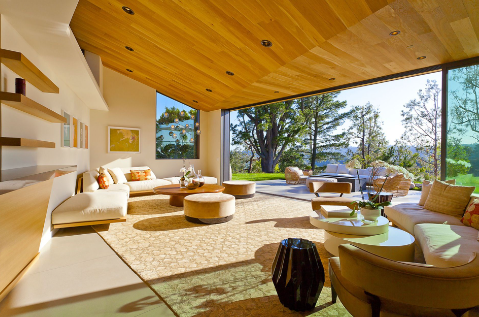
Designing large, open spaces can be both exciting and challenging. When managed well, open spaces provide an airy, comfortable feel with ample room for creativity. However, without thoughtful design, they can feel overwhelming or disconnected. Creating flow in these areas is essential for a cohesive, welcoming environment that invites movement and function. Here are key design tips for achieving flow in spacious, open areas.
Define Zones for Functionality
One of the best ways to bring flow to a large area is by creating distinct zones for various activities. For example, a spacious living area can be divided into a cozy seating area, a reading nook, and a dining space. Furniture placement, area rugs, and subtle design elements like screens or shelving units can help demarcate these zones. By defining areas based on function, you create a natural flow where each section has its purpose, giving a sense of order and structure to the open space.
Use Furniture to Guide Movement
Furniture is a powerful tool for directing the flow of an open space. Large sofas or sectional seating can serve as natural dividers between zones, while low-profile tables and armchairs encourage conversation and add a sense of intimacy. Avoid placing all furniture against walls; instead, use pieces to form “floating” areas in the middle of the room. This technique encourages movement around each zone and creates a sense of flow from one area to the next. A clear path should connect each section, inviting people to explore the entire space comfortably.
Incorporate Consistent Design Elements
Consistency in design elements, such as color, texture, and materials, can tie an open space together visually. A harmonious color palette helps different zones blend seamlessly while still retaining their individual functions. Consider choosing a primary color or texture to use throughout the space—whether through accent pillows, rugs, or wall art. Additionally, coordinating materials, like wood or metal, in furniture and décor maintains a sense of cohesion, making the space feel unified rather than segmented.
Use Area Rugs to Anchor Spaces
Area rugs are incredibly effective in creating flow in large areas, as they anchor specific zones while adding warmth and texture. Placing round rugs under the dining table or in a seating area visually delineates these spaces, giving them a grounded feel. Opt for rugs in coordinating colors or patterns that complement the overall design scheme. By creating these visual anchors, you make each area distinct yet part of a larger, cohesive whole, promoting flow throughout the space.
Leverage Lighting to Define Areas
Lighting plays a crucial role in enhancing flow and ambiance. Different lighting fixtures can help define various zones, whether through pendant lights above the dining table, a statement chandelier in the living room, or floor lamps in reading corners. Layered lighting adds dimension and draws attention to specific parts of the room, creating a natural flow from one area to the next. Dimmers are especially useful for controlling mood and adjusting the ambiance based on the time of day or activity, adding versatility to the open space.
Add Greenery and Décor for Continuity

Plants and decorative items are ideal for softening large spaces and adding continuity. Tall plants can serve as natural dividers without creating hard barriers, while smaller potted plants or flower arrangements bring life and color to each area. Incorporate decorative elements like art, mirrors, or sculptures that complement the design theme and connect each zone visually. These details help balance the open space, making it feel cohesive yet filled with personality.
Creating flow in large, open spaces is about blending functionality with aesthetic unity. By defining zones, using furniture placement strategically, and incorporating consistent design elements, you can design a space that feels connected and harmonious. The result is a comfortable, welcoming environment where each area serves a purpose, yet blends into the overall design, inviting movement and fostering a sense of flow.



(0) comments
We welcome your comments
Log In
Post a comment as Guest
Keep it Clean. Please avoid obscene, vulgar, lewd, racist or sexually-oriented language.
PLEASE TURN OFF YOUR CAPS LOCK.
Don't Threaten. Threats of harming another person will not be tolerated.
Be Truthful. Don't knowingly lie about anyone or anything.
Be Nice. No racism, sexism or any sort of -ism that is degrading to another person.
Be Proactive. Use the 'Report' link on each comment to let us know of abusive posts.
Share with Us. We'd love to hear eyewitness accounts, the history behind an article.